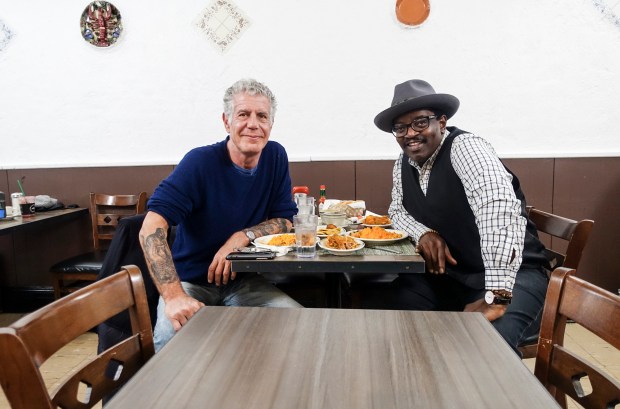Synopsis: Bourdain reflects on a specific time on New York City’s Lower East Side. During the 1970s and ’80s it was a hotbed of music, art, and drugs. He reminisces about his own personal history in the area and meets with legendary characters like Debbie Harry, Fab 5 Freddy, and Richard Hell.

On the increasingly tame character of the neighborhood:
Bourdain: “So what do you think now when you walk around the neighborhood? You paid some dudes to walk down it back in the day, and now it’s projectile-vomiting frat boys with baseball caps on backwards. Does this give you a sinking feeling or make you angry or—”
Amos Poe: “I wish I had bought real estate, that’s for sure.”
On the varieties of heroin available in the 1980s:
Bourdain: “You knew you were doing something bad when you bought a product called ‘toilet’ and shot it in your arm. Ah man, memories …”
On being served a hard-boiled egg:
John Lurie (painter): “I’ve seen your show. You eat mouse-head soup and then you go, ‘Mmm, it’s delicious.’ I’m just really curious to see if you’d eat the hard-boiled egg and say, ‘Wow, this is delicious.’”
Bourdain: “As long as there’s not a half-term chicken fetus in there—which wouldn’t be the first time for me, by the way—I’ll be thrilled.”

Guests weigh in:
Danny Fields (punk-rock manager): “You know where the greatest financial success has come from? ‘Hey! Ho! Let’s Go!’ sung in football and soccer stadiums around the world. The Ramones’ estates are gathering in more money every 5 seconds than they ever made in their careers. Is that the measure of greatness? Or eternity? It’s one of them.”
Hugh Mackie (motorcycle-repair-shop owner): “What they don’t know is that before the restaurants were here, there were no rats! All these rich people are coming down here, standing on rats, and they think that’s the East Village and it never was!”
Kembra Pfahler (filmmaker and performance artist): “You know how people immigrate here to start a new life and to dream big? I felt like I needed to do that as well just like the way that people did at the turn of the century. You move to New York to immigrate to a new land to start a new life, and that’s really what the Lower East Side is all about.”
Jim Jarmusch (filmmaker): “Look at the history of New York City. It’s always about hustling and change. If you want it to stay the same, man, you’ve got the wrong historical spot—because you used to have a Native American trading post on the tip of Manhattan. It’s now Wall Street!”
Clayton Patterson (photographer ): “New York. There was always something that brought it back, but once you fill it with the corporate world, it’s never going back. So we turned a corner that we will never go back again. And so it’s over.”